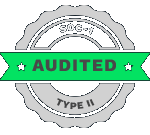Are you sure that your SaaS security is proper? Is it functional? – if not then you have landed in the right place. This blog shall let you explore more about SaaS security and how to ensure that your business stays strong & secure.
SaaS security’s importance is increasing fast in 2025 majorly due to the growing reliance over cloud-based applications & rapidly evolving landscapes. Organizations should focus on integrating AI in Saas security for safeguarding sensitive information while ensuring customer trust and loyalty.
Mr. CXO: Well, I completely understand what you are trying to say. What I want to know is what exactly is this SaaS security and how is it different from the security implemented for traditional security.
Table of Contents
Well, SaaS security identifies the different practices, measures, and techs employed for safeguarding the different software as a service application, their data, as well as those of the users who are accessing. This security is a crucial part of what we know as cybersecurity. Incorporated for reducing risks associated with cyber threats such as unauthorized access and data breaches.
Now to answer the second part of your question – saas security posture management (SSPM) is different from the traditional security measures due to the shift in distributed nature & shift of SaaS management.
The former focuses on shielding applications that are hosted and handled by third-party vendors and are accessed via the internet. Also, the security controls, measures, and strategies for SaaS applications are completely different.
Here is a quick tabular representation of the difference between traditional security and SaaS security.
| Feature | Traditional Security | SaaS Security |
|---|---|---|
| Control | Direct Control | Lack of direct control |
| Multi-tenancy | Not multi-tenant | Multi-tenant option |
| Access & Location | Can be accessed within corporate network | Can be accessed from anywhere, needing security controls for user location |
| Change Management | More control over update cycle | Frequent update with little control |
Evolving Threat Landscape – Emerging Risks in the SaaS AI Ecosystem
The SaaS (software as a service) ecosystem is currently experiencing various risks such as third-party attacks, data breaches, & cyber threats related to compliance and regulations. Risks are often worsened due to improper configurations, vulnerabilities, and weak access controls.
What are the third-party risks mentioned? – Mr. CXO asked.
These types of SaaS security compliance risks are generally associated when your organizational applications are integrated with third-party risk management. This introduces added security, potential scopes of attacks, and other vulnerabilities. Also, impact on a SaaS vendor’s infrastructure means impact on all the associated customers.
With third parties, there lies the risk of inadequate security measures. This results in easy-to-access entry points for cyber attackers to gain access and do their worst.
But the threats don’t end here. Just like outside threats, insider threats are equally dangerous.
Imagine a scenario where an untrained employee or an employee with actual malicious intent can pose serious risk to the organization through personal accounts or devices. Again, without proper access controls, employees can easily access sensitive information that’s beyond their ‘pay-grade’.
How Saas AI Powers Both Cyber Attacks and Defenses
Just like the two sides of the same coin, the rapid transformation of cybersecurity due to AI is both a strong defensive equipment and a great offensive weapon. AI-powered technologies & tools can evaluate huge amounts of data at great speed, along with highlighting patterns, and recognizing any anomaly. This dual nature creates a sort of ‘war’ between attackers and defenders since both the sides are constantly evolving their strategies.
How AI powers cyber-attacks
Automating the information accumulating process for potential targets, recognizing vulnerabilities, and customizing attacks for maximum impact.
Generating newer versions of malware that had avoided traditional signature-based detection methods.
Modified phishing emails and social engineering attacks are more convincing and effective.
Facilitating attackers to launch massive attacks at a great speed, making it difficult to deal with traditional defenses.
Example: A reputable medium-scale finance company lost around 20 million dollars due to a sudden cyber ransomware attack. Despite having proper security systems, it was seen that they had been using some outdated versions that let this cyber-attack happen.
Recommended Reading:
- Serverless SaaS in 2025: Build Scalable Multi-Tenant Apps with Less Code
- SaaS Management: Streamlining Your Subscriptions, Spend, and Efficiency
- Want Scalability and Data Backup Recovery for Your Business? SaaS In Cloud Computing May Be the Answer
- How SaaS Integration can be the Game Changer for Small Businesses?
- The Best Practices for SaaS Application Integration
How AI Powers Cyber Defenses
Evaluating network traffic, system logs, & user behavior for identifying any suspicious activity and potential threats in real-time.
Automating the response process to cyberattacks, separating infected systems, preventing malicious traffic, and activating alerts.
Assessing attack history & patterns to predict any potential attack and strengthen the respective defenses.
Programming several tasks such as incident investigation and threat identifying to keep analysts free to focus on more intricate threats.
By automating routine tasks and providing real-time insights, AI can significantly improve an organization’s overall security posture.

Zero-Trust SaaS Architecture – Building a Future-Ready Security Framework
To build a future-ready software as a service security framework, it is important for organizations to focus on a more layered approach surrounding a strong identity and access management, relevant data protection measures, constant tracking, and robust security.
This process for integrating AI in Saas security involves incorporating robust authentication, translating sensitive data, and regularly evaluating and keeping the security protocols updated to stay ahead of evolving threats.
What are the key components for a future-ready SaaS security framework?
Building robust software as a security framework involves incorporating several key components:
Recognizing identity & access management for ensuring that the authorized individuals that are accessing or can access the system. Features such as Multi-Factor Authentication (MFA) and Single Sign-On (SSO) need to be streamlined for easy yet secure user access.
Protecting data, that’s in process of transmission or is at rest, using strong encryption procedures such as TLS and AES-256 for stopping any unrecognized data access.
Automating compliance monitoring through regulation means such as SOC 2, HIPAA, and GDPR for receiving active alerts related to any possible loopholes.
Establishing a clear, comprehensive, and verified plan for attending any security breaches, thorough investigations, and communication protocols.
Tracking the security configurations of SaaS security posture management (SSPM) to ensure that they are following the different compliance protocols and industry standards. It also needs to be ensured that you are gaining real-time security insights.
Incorporate measures for observing how the data is moving inside & outside the organization. Point out any unwanted transfer while putting a stop to any accidental sharing of data, majorly sensitive/classified information.
Conduct evaluations for the SaaS vendors to ensure that they understand the organization’s regulatory and compliance requirements.
Educate employees about common cyber threats & third-party risk management like phishing and social engineering to reduce the risk of human error.
Vendor Risk Management – Mitigating Third-Party Vulnerabilities
2025 isn’t just about safeguarding your perimeter – it is about protecting every single of the connections that your business depends on. With every organization incorporating hundreds of software as a service application, third-party AI cybersecurity threats are one of the most underestimated, yet crucial threats.
But why should it matter so much to me? – Mr. CXO is now quite concerned.
“Remember cyber attackers really, really, really love weak links.”
Think of it as locking the main door of your house by simply hanging the lock but not using the key to secure it.
So, compromising your organizational security just to save some dollars and therefore relying on a small vendor is a very bad decision.
As per several reports, it was observed that around 70% of SaaS security compliance breaches come from third-party integrations.
AI is also used by the attackers to recognize and use the vendor vulnerabilities, enabling them to utilize even a minute misconfiguration to enter and wreak havoc.
Mr. CXO is now looking for some concrete strategies to strengthen his organization’s vendor risk management, right?
Here are some quick tips that every single CXO out there should follow:
Constant monitoring of the vendor security using AI cybersecurity threats.
Give a minimal level of access to the vendors based on their role & requirements.
Incorporate systems to automatically track compliance of vendors to the different governance frameworks.
Make the vendors participate in incident response activities to keep them in sync with protocols.
Include AI centric clauses related to data handling & data breach in the agreement with the vendors.
Quick Pro Tip: Consider every associated vendor as a likeable source or entry point of cyber-attack. Keep an AI-driven security measure to help you make swift decisions regarding the AI cybersecurity threats.
SaaS AI Regulations & Compliance – Navigating the New Legal Landscape
AI data governance is no longer an option. It is a mandatory requirement since regulators across the world are introducing strict SaaS security framework to manage the use of AI.
Another question – what are the major compliance priorities for SaaS leaders?
Identify where AI can be or is being applied.
Incorporate policies and procedures that are in sync with current AI governance standards such as ISO.
Conduct regular audits for the AI models based on their type of usage, behavior, and reliability.
Execute compliance checks on the vendor’s side to see whether their AI is meeting those requirements.
Maintain clear documentation and records to showcase compliance as & when needed.
Conclusion & Action Plan – Staying Ahead of SaaS AI-Powered Threats
Now, as a CXO, you are fully convinced that he needs to strengthen the security of software as a service and keep it top-notch.
Every decision maker who values their business should think beyond perimeter security. Incorporate intelligence detection systems, automated incident response, and predictive analytics to formulate a plan to beat the attackers.
Don’t worry if you have been a victim once to cyber-attack. Now is your chance to learn and be prepared and show the attackers who’s the boss.
FAQs
What are the biggest emerging threats in SaaS security compliance?Phishing-as-a-Service, account takeover, insider threats, and AI-powered cyberattacks are rapidly growing risks.
How is AI used in SaaS security?AI detects anomalies in real time, predicts potential breaches, and automates threat response—but attackers also use AI to craft sophisticated attacks.
What is zero-trust in SaaS?A security model where no user or device is trusted by default, and continuous authentication verifies every access request.
Why is vendor risk management important?Third-party SaaS providers can be weak links—assessing their security posture prevents supply chain breaches.
Are there AI-specific SaaS regulations?Yes, frameworks like the EU AI Act and U.S. AI policy guidelines address AI use, transparency, and data privacy in SaaS platforms.












 AI SaaS Solutions for Operational Excellence and Business Efficiency
AI SaaS Solutions for Operational Excellence and Business Efficiency  AI SaaS RAG Workflows: Smarter Knowledge Retrieval for CXOs
AI SaaS RAG Workflows: Smarter Knowledge Retrieval for CXOs  OpenAI SaaS integration – A Quick Guide for CXOs
OpenAI SaaS integration – A Quick Guide for CXOs  Serverless SaaS in 2025: Build Scalable Multi-Tenant Apps with Less Code
Serverless SaaS in 2025: Build Scalable Multi-Tenant Apps with Less Code 
